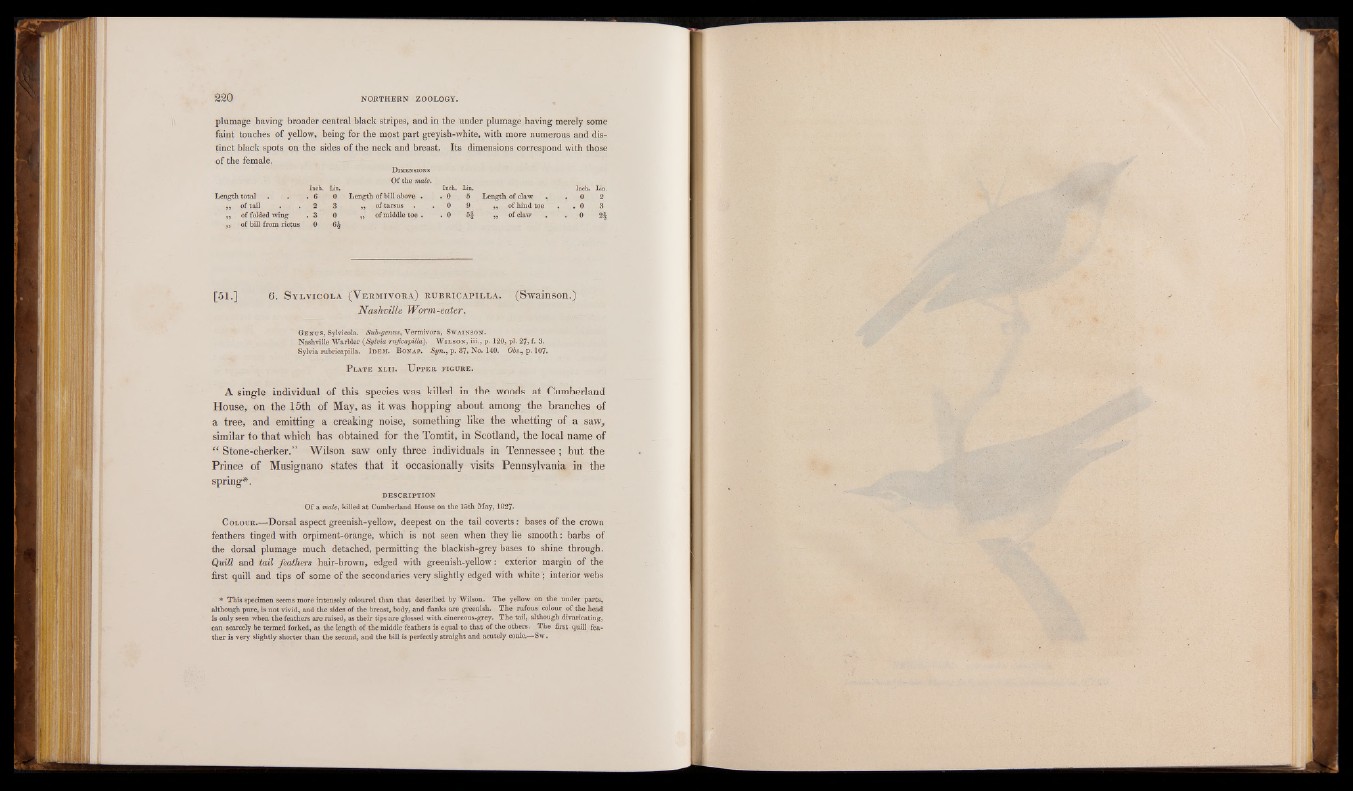
plumage having broader central black stripes, and in the under plumage having merely some
faint touches of yellow, being for the most part greyish-white, with more numerous and distinct
black spots on the sides of the neck and breast. Its dimensions correspond with those
o f the female.
D im en sio n s
Of the male. Length total . 6 0 Length of bill above . . 0 5 Length of claw . Lin. . 0 2
„ of tail . ■ ■ . 2 3 ,, of tarsus . . 0 9 ,, of hind toe . 0 3
,, of folded wing
. 3
„ of bill from rictus
0
0
6*
„ of middle toe . . 0 5f ,, of claw . 0 21
[51.] 6. Sylvicola (Yermivora) rubricapilla. (Swainson.)
Nashville Worm-eater.
Ge n u s , Sylvicola. Submenus, Yermivora, Sw a in so n .
Nashville Warbler (Sylvia ruficapilla). W ilson, iii., p. 120, pi. 27, f. 3.
Sylvia rubricapilla. I d em . B o nap. Syn., p. 87, No. 140. Obs., p. 107-
P late x l ii. U p p e r f ig u r e .
A single individual of this species was killed in the woods at Cumberland
House, on the 15th of May, as it was hopping about among the branches of
a tree, and emitting a creaking noise, something like the whetting of a saw,
similar to that which has obtained for the Tomtit, in Scotland, the local name of
“ Stone-cherker.” Wilson saw only three individuals in Tennessee; but the
Prince of Musignano states that it occasionally visits Pennsylvania in the
spring*.
DESCRIPTION
Of a male, killed at Cumberland House on the 15th May, 1827>
C olour.—Dorsal aspect greenish-yellow, deepest on the tail coverts: bases of the crown
feathers tinged with orpiment-orange, which is not seen when they lie smooth: barbs of
the dorsal plumage much detached, permitting the blackish-grey bases to shine through.
Quill and tail feathers hair-brown, edged with greenish-yellow: exterior margin of the
first quill and tips of some of the secondaries very slightly edged with white ; interior webs
* This specimen seems more intensely coloured than that described by Wilson. The yellow on the under parts,
although pure, is not vivid, and the sides of the breast, body, and flanks are greenish. The rufous colour of the head
is only seen when the feathers are raised, as their tips are glossed with cinereous-grey. The tail, although divaricating,
can scarcely be termed forked, as the length of the middle feathers is equal to that of the others. The first quill feather
is very slightly shorter than the second, and the bill is perfectly straight and acutely conic.—Sw.